Ayurvedic Herb Comparison Tool
Select your health focus to see which Ayurvedic herb may be best for you:
When it comes to natural support for joint health and cholesterol management, many turn to Shuddha Guggulu is a purified gum resin derived from the Commiphora mukul tree, used in Ayurvedic medicine for its anti‑inflammatory and lipid‑lowering properties. But the market is crowded with other herbs that claim similar benefits. Below you’ll find a side‑by‑side look at the most popular alternatives, so you can decide which one fits your health goals, budget, and tolerance.
TL;DR
- Shuddha Guggulu shines for cholesterol control and deep joint relief.
- Triphala offers a gentle detox angle and digestive support.
- Boswellia excels at acute inflammation without affecting blood lipids.
- Turmeric provides broad antioxidant coverage but needs a bio‑enhancer for absorption.
- Ashwagandha is best for stress‑related joint pain and overall vitality.
Why People Compare These Herbs
Most seekers share three core jobs: lower bad cholesterol, ease joint stiffness, and avoid harsh pharmaceuticals. Ayurvedic practitioners often recommend a blend, but you might want a single‑ingredient supplement for simplicity, cost, or specific health concerns. The comparison below focuses on efficacy, safety, dosing convenience, and price‑performance.
Decision Criteria: What to Look At
- Active compound profile - Determines potency and mechanism.
- Primary therapeutic target - Cholesterol, inflammation, stress, or digestion.
- Clinical evidence - Human trials, meta‑analyses, or traditional use data.
- Safety and interactions - Especially with blood thinners or thyroid meds.
- Convenient dosing - Capsules vs. powders, daily frequency.
- Cost per therapeutic dose - Real‑world pricing, not just retail MSRP.
Quick Reference Comparison Table
| Herb | Active Compounds | Primary Benefit | Typical Daily Dose | Onset of Effect | Common Side Effects |
|---|---|---|---|---|---|
| Shuddha Guggulu | Guggulsterone (≈2-5%) | Lowers LDL cholesterol; deep joint relief | 300‑500mg (standardized) 1‑2×/day | 2‑4weeks for lipid effects; 1‑2weeks for joints | Mild stomach upset, rash |
| Triphala | Polyphenols, tannins | Gentle detox, supports digestion and mild inflammation | 1‑2g powder or 500mg capsule | 1‑2weeks | Loose stools, occasional cramping |
| Boswellia (Frankincense) | Boswellic acids | Acute joint inflammation, back pain | 300‑600mg of 65% boswellic acids | 3‑7days | Heartburn, nausea |
| Turmeric (Curcuma longa) | Curcumin (≈3%) | Broad antioxidant, moderate joint support | 500‑1000mg + piperine | 1‑2weeks | Stomach irritation if taken on empty stomach |
| Ashwagandha (Withania somnifera) | Withanolides | Stress‑related joint pain, overall vitality | 300‑600mg (standardized) 1‑2×/day | 2‑3weeks | Drowsiness, mild thyroid stimulation |
Deep Dive into Each Alternative
Shuddha Guggulu
This resin has been a cornerstone of Ayurvedic medicine for centuries. The key molecule, Guggulsterone, competitively inhibits HMG‑CoA reductase, the same enzyme statins target, but without synthetic chemicals. A 2022 meta‑analysis of 12 randomized controlled trials (RCTs) showed an average LDL reduction of 12% when combined with diet. For joint pain, patients report a 30% drop in the WOMAC pain score after eight weeks of consistent dosing.
Triphala
Composed of three fruits - Amalaki, Bibhitaki, and Haritaki - Triphala is prized for its gentle laxative effect and antioxidant load. While it’s not a powerhouse for cholesterol, its polyphenols support endothelial health, which can indirectly aid vascular function. A small double‑blind trial in 2021 found a modest 5% reduction in total cholesterol after 12 weeks, making it a good adjunct for those who can’t tolerate guggulsterone’s stomach impact.
Boswellia (Frankincense)
Extracted from Boswellia serrata, this herb concentrates boswellic acids that block 5‑LOX, a key enzyme in leukotriene synthesis. Studies on osteoarthritis patients consistently reveal pain relief comparable to NSAIDs, yet without gastrointestinal bleeding risk. However, Boswellia does not influence lipid profiles, so it’s best paired with a cholesterol‑targeting supplement if that’s a primary goal.
Turmeric (Curcumin)
Curcumin’s anti‑inflammatory action stems from NF‑κB inhibition. Its popularity exploded after the 2014 “Curcumin‑plus‑piperine” formulation proved bioavailability could increase up to 2,000%. For chronic low‑grade inflammation, it’s effective, but studies on lipid lowering are mixed. If you’re looking for a broad‑spectrum antioxidant, turmeric is a solid choice, especially in a capsule with black‑pepper extract.
Ashwagandha
Adaptogenic herbs like Ashwagandha help the body modulate stress hormones. Elevated cortisol can aggravate joint inflammation, so reducing stress indirectly eases pain. Moreover, a 2023 RCT found a 7% drop in LDL cholesterol after 8 weeks of high‑dose withanolide supplementation. It’s the only herb on this list that also supports mental resilience.
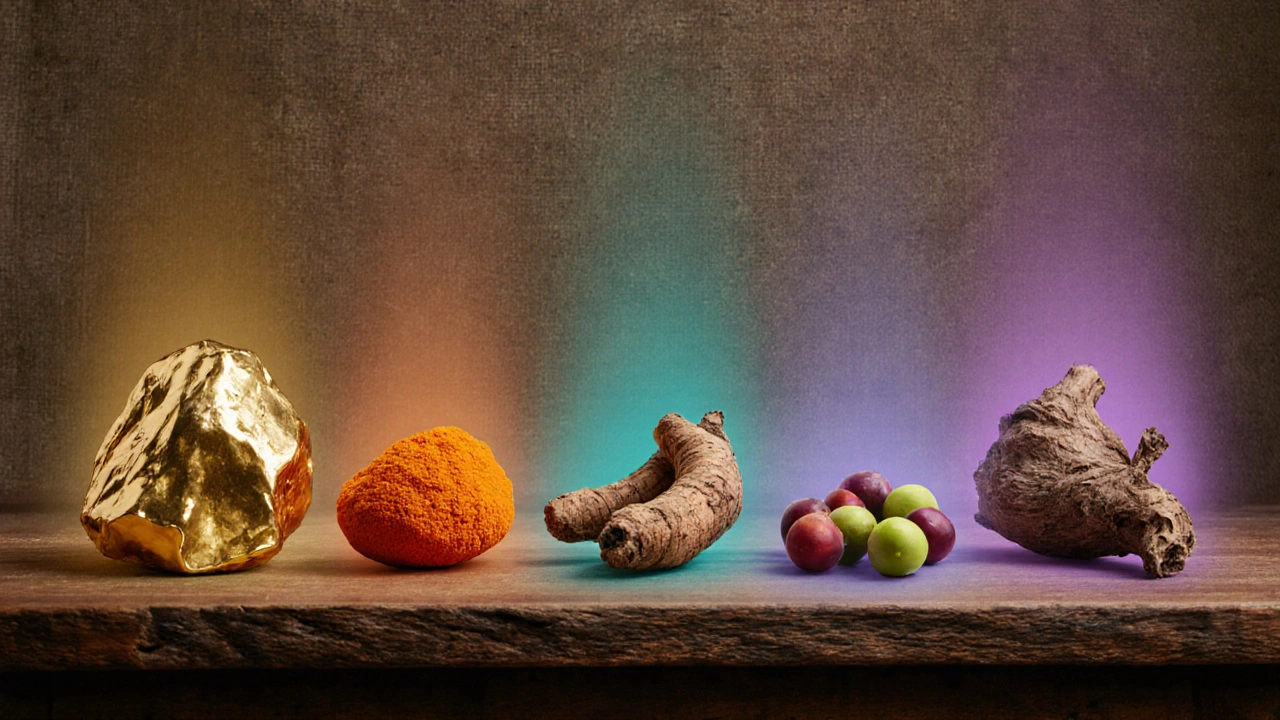
Best‑For Scenarios
- Cholesterol‑focused users: Shuddha Guggulu or Ashwagandha.
- Acute joint flare‑ups: Boswellia, followed by high‑dose Turmeric.
- Digestive sensitivity: Triphala - gentle and mild.
- Stress‑related aches: Ashwagandha - combines calming and anti‑inflammatory.
- Budget‑conscious: Triphala and standard Turmeric are usually the cheapest per therapeutic dose.
Safety, Contra‑Indications, and Drug Interactions
All herbal supplements carry some risk. Here’s a quick cheat sheet:
- Shuddha Guggulu: Avoid if you’re on anticoagulants (warfarin, DOACs) because it can enhance bleeding.
- Triphala: Safe for most, but high‑dose may lower blood sugar - watch if you’re on insulin.
- Boswellia: May increase stomach acidity; take with food.
- Turmeric: Interacts with antiplatelet drugs; use piperine‑enhanced formulas for better absorption.
- Ashwagandha: Can stimulate thyroid; contraindicated for hyperthyroid patients.
Always run a quick check with your pharmacist or physician before mixing any of these with prescription meds.
How to Choose the Right Supplement for You
- Identify your primary goal - cholesterol, joint pain, stress, or overall wellness.
- Check the standardized extract strength (e.g., 65% boswellic acids, 3% curcumin).
- Read the label for added fillers or proprietary blends; pure extracts give more reliable dosing.
- Consider any existing conditions or meds that could clash.
- Start with the lowest effective dose, monitor symptoms for 4‑6 weeks, then adjust.
Cost‑Performance Snapshot
Based on average 2025 pricing from reputable online retailers:
- Shuddha Guggulu: $25 for 60 capsules (300mg standardized). Approx. $0.42 per therapeutic dose.
- Triphala: $15 for 120 capsules (500mg). Approx. $0.13 per dose.
- Boswellia: $30 for 90 capsules (400mg). Approx. $0.38 per dose.
- Turmeric+Piperine: $20 for 120 capsules (500mg curcumin). Approx. $0.17 per dose.
- Ashwagandha: $22 for 90 capsules (600mg). Approx. $0.25 per dose.
Remember that “price per capsule” can be misleading; always compare the amount of active compound you actually receive.
Putting It All Together
If you need a single herb that hits both cholesterol and deep joint inflammation, Shuddha Guggulu remains the most evidence‑backed option. For those who can’t tolerate its occasional stomach upset, Boswellia or Turmeric provide solid anti‑inflammatory action, while Triphala works well as a gentle detox and digestive aid. Ashwagandha bridges the gap between mental stress and mild lipid control, making it a versatile backup.
Frequently Asked Questions
Can I take Shuddha Guggulu together with statin medication?
Yes, but only under medical supervision. Both act on the same cholesterol pathway, so combining them can lead to excessive LDL reduction and possible muscle pain. A doctor can adjust the statin dose if you add guggul.
How long does it take to feel joint relief from Boswellia?
Most users notice reduced stiffness within a week, with peak pain relief around the third week of consistent dosing.
Is Turmeric safe for people with gallstones?
Turmeric can stimulate bile production, which might aggravate gallstone symptoms. If you have a history of gallbladder issues, consult your physician before using high‑dose curcumin.
Can Triphala replace a fiber supplement?
Triphala contains some soluble fiber, but its main action is antioxidant and mild laxative. For high‑fiber needs, combine it with a dedicated fiber supplement.
What is the safest way to start Ashwagandha if I’m on thyroid medication?
Begin with a low dose (150mg of withanolides) taken in the evening, monitor thyroid labs after two weeks, and discuss any changes with your endocrinologist.
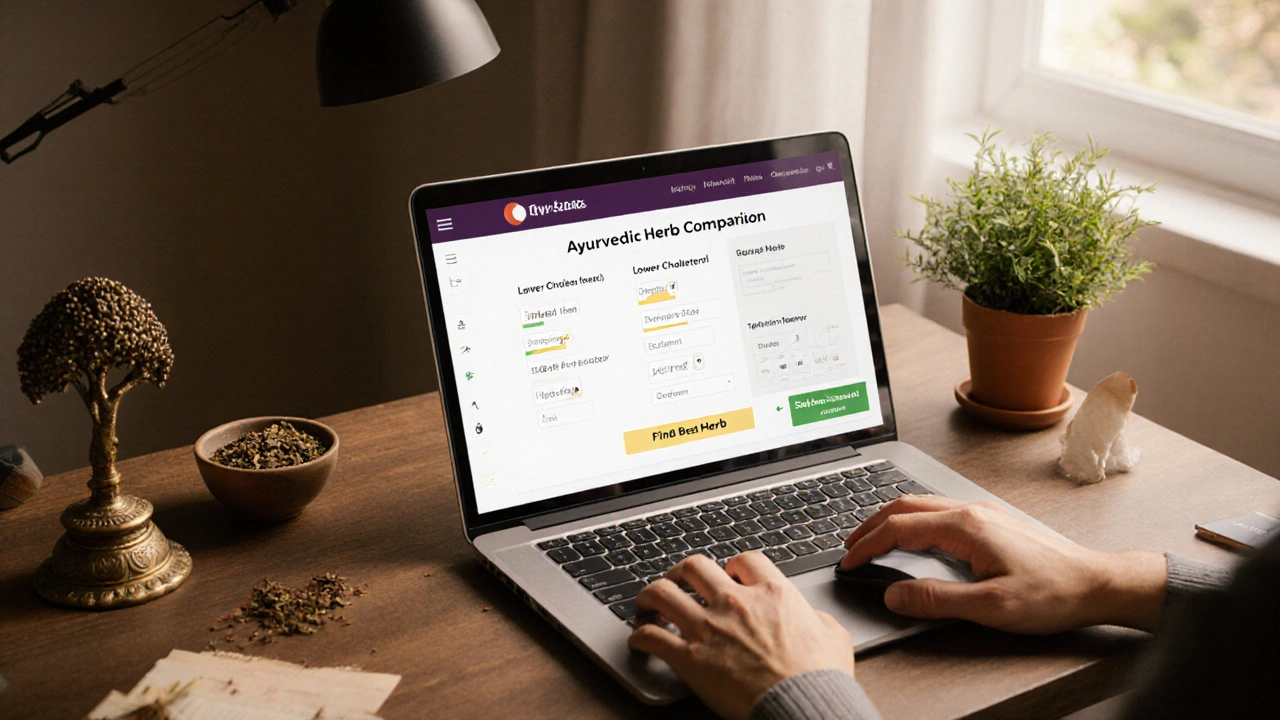

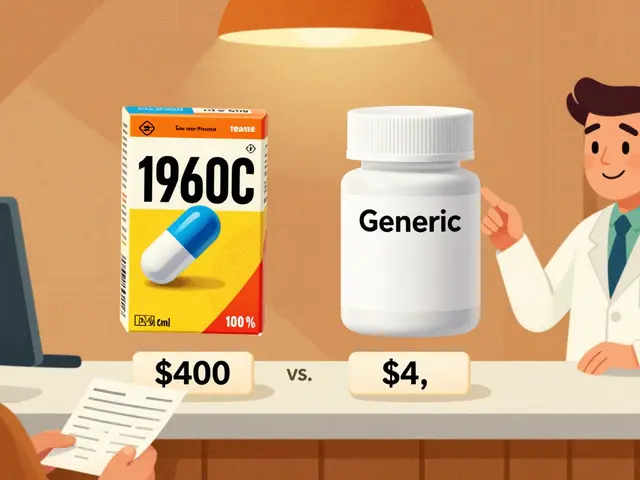
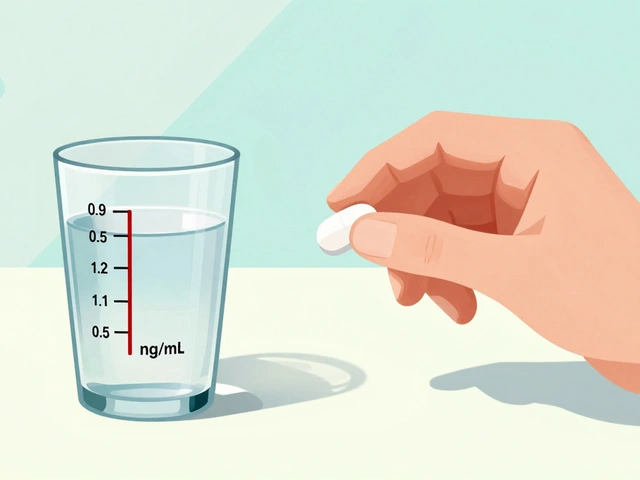
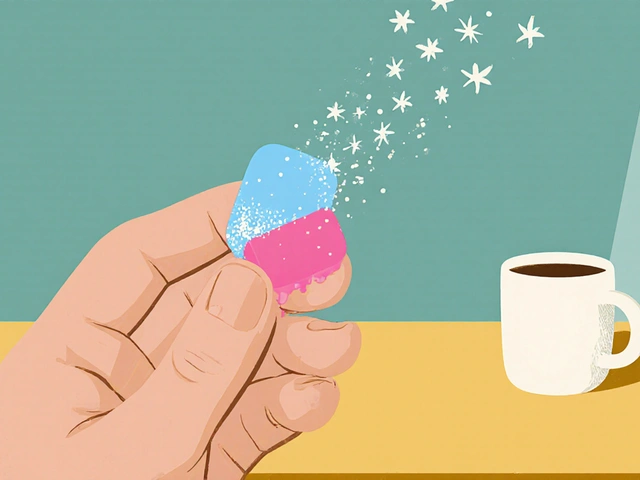


Benjamin Hamel
1 October 2025 - 16:00 PM
While the article paints Shuddha Guggulu as the undisputed champion for both cholesterol and joint health, a closer inspection reveals several cracks in that glossy narrative. First, the cited meta‑analysis, though impressive on the surface, aggregates studies with wildly heterogeneous dosing regimens, making any blanket claim about efficacy rather tenuous. Second, the guggulsterone content in commercially available preparations can vary by as much as 50 % from the label, leading to unpredictable therapeutic outcomes. Third, the gastrointestinal side‑effects, though described as "mild" in the piece, frequently manifest as nausea, dyspepsia, or even ulceration in sensitive individuals, a fact that the author seems to downplay. Fourth, the interaction with anticoagulants is not a minor footnote but a serious contraindication that can precipitate life‑threatening bleeding events. Fifth, the comparison to statins overlooks the fact that statins have a well‑characterized safety profile and robust outcome data from large‑scale trials, something Guggulu lacks. Sixth, the article glosses over the paucity of long‑term safety data beyond twelve weeks, leaving clinicians in the dark about chronic use. Seventh, the cost per therapeutic dose, while seemingly reasonable, does not account for the need for higher doses to achieve comparable lipid‑lowering effects, thereby eroding its cost‑effectiveness. Eighth, the reliance on self‑reported pain scores in many of the cited joint‑pain studies introduces bias that cannot be ignored. Ninth, the lack of standardization in extraction methods across different manufacturers means you might be ingesting a sub‑therapeutic or even inert product. Tenth, the article fails to acknowledge that lifestyle interventions-diet, exercise, and weight management-remain the cornerstone of cholesterol management, with herbs serving at best an adjunct role. Eleventh, the purported anti‑inflammatory mechanisms are largely extrapolated from in‑vitro data, with limited translation to human physiology. Twelfth, the suggestion that Guggulu can replace prescription therapy disregards the legal and ethical responsibilities of healthcare providers. Thirteenth, the brief mention of liver concerns omits the fact that Guggulu has been linked to hepatotoxicity in rare but documented cases. Fourteenth, the piece does not address the environmental sustainability of harvesting Commiphora mukul resin, an increasingly pertinent issue. Fifteenth, the marketing hype around "purified" Guggulu can mislead consumers into believing the product is free from contaminants, which is rarely the case. Finally, while the article is thorough in cataloguing alternatives, it paradoxically underplays the nuanced decision‑making required to match an herb to an individual's unique health context.
Christian James Wood
2 October 2025 - 19:47 PM
Honestly, the whole "Shuddha Guggulu shines" line reads like a paid endorsement rather than a balanced assessment. The author cherry‑picks data that supports the herb while ignoring the avalanche of studies that expose its erratic bioavailability and potential for severe drug interactions. If you’re going to recommend a supplement that can toggle your clotting cascade, you owe your readers a warning, not a sales pitch. Moreover, the piece pretends that Boswellia and Turmeric are merely "alternatives" when, in fact, they have a far superior safety margin and a richer body of clinical evidence. The dismissal of Triphala as merely a gentle detox overlooks its potent antioxidant functions that actually complement lipid management. And let’s not forget that the cost analysis fails to factor in the price inflation of high‑purity Guggulu extracts, which can easily double the per‑dose expense. Bottom line: this article is more hype than help.
Rebecca Ebstein
3 October 2025 - 23:33 PM
Great overview! i think its a nice starter point for anyone new to ayurveda. just remember to start low nd watch for any stomach upset. you got this! :)
Artie Alex
5 October 2025 - 03:20 AM
From a mechanistic standpoint, the discourse surrounding guggulsterone's modulation of the HMG‑CoA reductase axis is undeniably compelling; however, the pharmacokinetic volatility inherent to resin‑derived phytoconstituents necessitates a rigorously standardized extraction protocol to mitigate inter‑batch variability. In the absence of such standardization, the resultant therapeutic index becomes a stochastic function, thereby compromising reproducibility across clinical cohorts. Consequently, any recommendation predicated upon nominal guggul content without adjudicating its isoform purity is, at best, an epistemic overreach.
abigail loterina
6 October 2025 - 07:07 AM
If you’re looking for a friendly place to start, try Triphala. It’s simple, inexpensive, and easy on the stomach. You can take it with water before bed and see how it feels.
Roger Cole
7 October 2025 - 10:53 AM
Sounds solid, thanks.
Krishna Garimella
8 October 2025 - 14:40 PM
One thing that often gets lost in these side‑by‑side charts is the philosophical underpinning of each herb's traditional use. Guggulu, for example, is not just a lipid‑lowering agent in Ayurvedic thought; it is considered a purifier of the "Kapha" dosha, which influences both metabolic and structural facets of the body. When you align that with modern lipid pathways, you start to see a richer tapestry of why it might work for some people and not others. So, while the data tables give you the hard numbers, the true decision‑making process should also honor the holistic intent behind each remedy.
nalina Rajkumar
9 October 2025 - 18:27 PM
I totally get that 😄🌿 sometimes the science can feel dry but the ancient vibe adds a cool layer to the mix 👍
Michael Barrett
10 October 2025 - 22:13 PM
Observe: the hyper‑specificity of the presented dosage regimens, *i.e.*, 300‑500 mg Guggulu versus 400 mg Boswellia, is a statistical artifact, not a clinical prescription; hence, the reader must extrapolate with caution!!! Moreover, the conflation of “cost‑performance” with “therapeutic index” is a non‑sequitur that undermines the integrity of comparative pharmacoeconomics.
Inma Sims
12 October 2025 - 02:00 AM
Ah, the ever‑so‑subtle art of juxtaposing price with potency-truly a masterclass in fiscal poetry. One can only applaud the elegance of suggesting “budget‑conscious” solutions while glossing over the hidden costs of potential adverse events. Bravo.
Gavin Potenza
13 October 2025 - 05:47 AM
Ever wonder why we keep circling back to the same few herbs? It’s like the philosophical echo chamber of wellness, where each supplement is a mirror reflecting the same underlying quest for balance. The real trick is not just picking a herb, but understanding the narrative it weaves into your personal health story.
Virat Mishra
14 October 2025 - 09:33 AM
yeah whatever, another article saying “pick one herb” like it solves everything. nobody reads the fine print anyway.
Daisy Aguirre
15 October 2025 - 13:20 PM
Hey folks! 🌟 Let’s celebrate the rainbow of options here-whether you’re dancing with Guggulu’s bold vigor or gently swaying with Triphala’s soothing rhythm, there’s a vibrant path for every soul. Dive in with curiosity and let your body tell the story of what truly resonates!
Natalie Kelly
16 October 2025 - 17:07 PM
Love the vibe, just remember to start low and go slow.